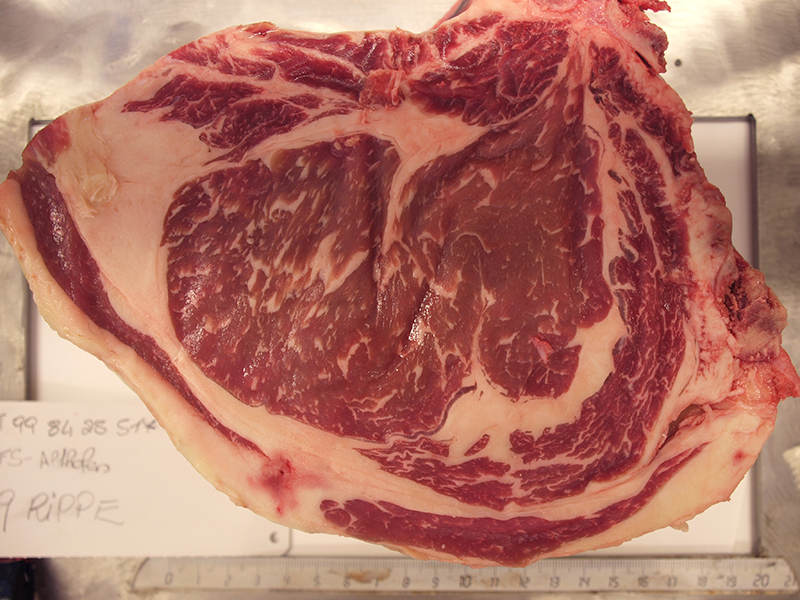When it comes to beef, the “meat quality” is already a deciding factor for consumers when purchasing (Roll-AMA AMA-Marketing, 2015), with beef currently making up almost 20% of our meat consumption (Statistik Austria 2018).
Austria has a self-sufficiency rate for beef of over 140% (Statistics Austria, AWI 2017). Nevertheless, over 140,000 pieces of beef (approx. 51,000 tons) are imported every year (AWI 2018). Consumers and beef lovers are often of the opinion that foreign beef (e.g. from America) is superior to domestic beef in terms of meat quality. Since meat quality and meat marbling (among other influencing factors) are linked, this group of buyers can be served with well-marbled beef.
The term meat quality and marbling is on everyone's lips, but there is often a lack of clarity about the influencing factors and, for example, the level of marbling in Austrian beef.
In countries such as the USA, Australia, Canada and Japan, internal meat quality (marbling, etc.) has been routinely measured at slaughterhouses for years (decades). Meat marbling is primarily an issue for the fresh meat market. Meat quality characteristics such as meat marbling are probably not of equal interest for all cattle fattening systems in Austria. For example, for the typical Austrian Simmental bull fattening based on corn silage and concentrated feed and intramuscular fat content of 2-3% (in the roast), the marbling assessment will initially be of minor importance (although the Austrian bull fattening is by no means meant to be badmouthed here). However, for certain professional groups (regional butchers, farmers with direct marketing, (top) restaurants, etc.) meat quality/meat marbling can be a central issue, especially for veal and ox, in order to generate higher profits.
By considering the marbling/meat quality of beef carcasses as an additional criterion, “added value through additional information” can be created for certain stakeholders (regional butchers and slaughterhouses, certain quality programs as well as for producers and consumers).







